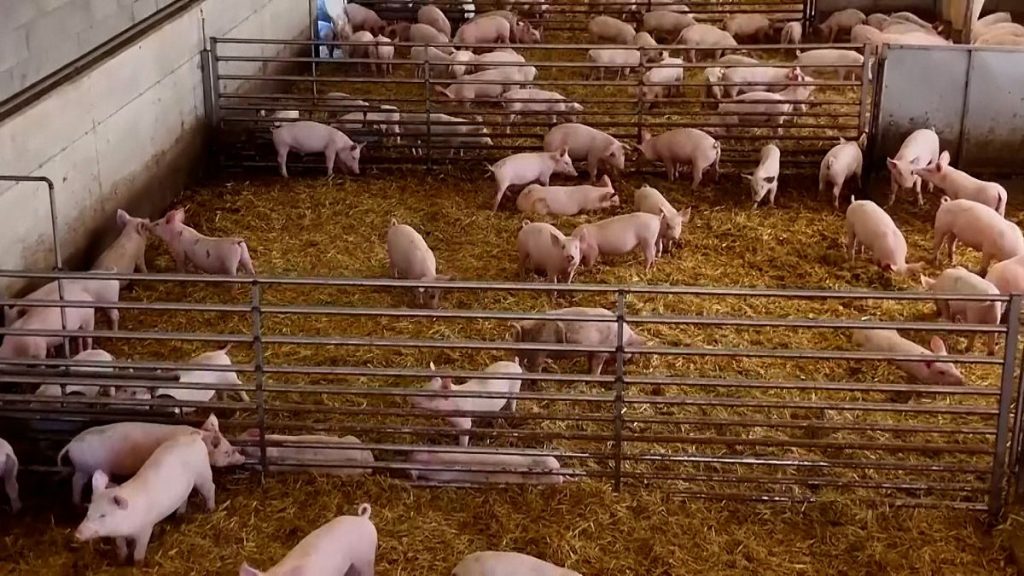Italian authorities have been forced to cull nearly 120,000 pigs due to the outbreak of swine fever in the country since January 2022. Since then, three-quarters of those pigs have been slaughtered, with the disease heavily impacting northern Italian food-producing regions. The outbreak has posed a threat to the livelihoods of farmers and the production of prized pork products such as prosciutto and cured sausage. At a farm in Lombardy, all 6,200 pigs were culled in an effort to halt the spread of the disease. Strict protocols are in place to prevent further outbreaks, with only essential employees allowed on the farm under strict hygiene measures.
The disease has caused 24 outbreaks in early September, with most cases concentrated in Lombardy. Regions such as Piedmont and Emilia Romagna, known for their Parma prosciutto, are of particular concern. The impact of the outbreak extends to farms in a further 23,000 square kilometers due to the threat posed by potentially infected wild boars in the buffer zone. Swine fever typically infects wild boars first before spreading to domestic pigs, where it is almost always fatal. The damage to the pork industry is estimated at €500 million so far, with some farmers at risk of losing their livelihoods. The sector generates €20 billion along the supply chain, from the farms where pigs are raised to the factories where ham is cured.
In response to the outbreak, the Italian government appointed a new commissioner, Giovanni Filippini, to tackle the pandemic over the summer. Filippini has implemented restrictions on farm access and animal transfers, as well as enlarging buffer zones to contain the spread of the disease. These measures have shown some impact in controlling the outbreak. Farmers in the affected regions are taking stringent precautions to ensure the disease does not spread further, with strict hygiene protocols in place for employees who are still allowed on the farms. The situation has caused significant concern among farmers and industry stakeholders, as the economic impact of the outbreak continues to grow.
The rapid spread of swine fever has posed a significant threat to Italy’s pork industry, with farms facing extreme losses and potential bankruptcy due to the outbreak. The disease, which originated in wild boars before spreading to domestic pigs, has led to the culling of thousands of animals in an effort to contain the spread. The impact of the outbreak extends beyond the farms directly affected, with restrictions in place in a large buffer zone to prevent further contamination. The Italian agricultural lobby has estimated the economic damage to the sector at €500 million, with continued risk to farmers’ livelihoods and the supply chain overall.
Farmers like Giovanni Airoli, who lost all 6,200 pigs on his farm, are struggling to understand how the disease was able to spread despite following strict safety measures. The loss of livestock and the potential collapse of the prized pork industry in regions such as Lombardy, Piedmont, and Emilia Romagna have placed significant strain on both farmers and government authorities. The appointment of a new commissioner to manage the outbreak has led to stricter protocols and measures being put in place to contain the spread of the disease. However, the long-term impact on the pork industry in Italy remains uncertain as efforts continue to curb the outbreak and protect the livelihoods of farmers and the broader supply chain. The ongoing threat posed by swine fever serves as a stark reminder of the challenges faced by the agriculture industry in the face of disease outbreaks and the critical need for effective containment measures.


